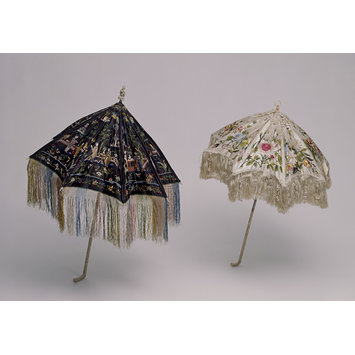 |
| Two parasols, c. 1860-70, in the Victoria & Albert Museum |
The first thing about 1860s parasols is that they are small. Of the closely-dated (1850-1870) originals in The Met's collection, nineteen have dimensions included. Only two exceed 30" long, both of which are European in origin and dated to the 1850s; based on Marta's article, I suspect they date from the early 1850s, when parasols tended to be larger. The other seventeen range from 22.6"-28.5", averaging 25.2" long. The rib length is only given for three of the parasols: each is 26" long, with ribs of 10", 10", and 13". The others have similar proportions, with the ribs just under half the stick length.
 |
| Four parasols from the author's collection. The black parasol in the back has been recovered, the other three have their original canopies. |
Period parasols can either have straight sticks ("walking" parasols) or ones which fold with a joint in the center ("carriage" parasols). My collection has two folding parasols and two which do not fold; the 17 Met parasols consist of 11 folding (visible joint and sleeve), four straight, and two which are unclear.
| The metal sleeve covers a joint, allowing the parasol to be folded in half for transport or held straight while in use. From an 1850 parasol in the UK National Trust collections. |
 |
| Black folding parasol, likely a marquise, c. 1860, from The Met. |
 |
| Folding and tilting black marquise parasols in the author's collection. The one on the right has been recovered. |
 |
| Black marquise parasols closed and folded. Both 28" long when opened, they fold to 16" and 15". From the author's collection. |
 |
| Straight parasols with detachable handles, from the author's collection. |
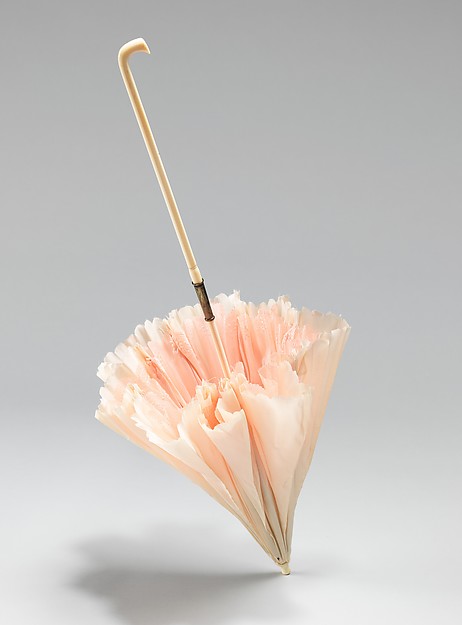 |
| Folding parasol, 1860-1869, in The Met; the white hooked handle may be carved bone or ivory. |
| Parasol, c. 1858-1865, with wood and brass frame, cane ribs. From the UK National Trust collections. |
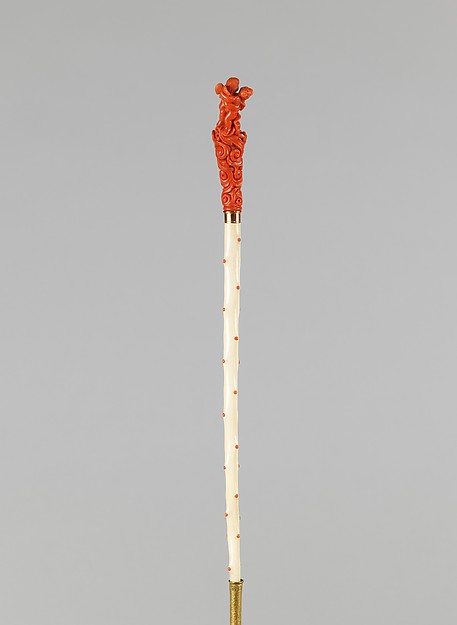 |
| Parasol handle of carved coral and ivory. French, c. 1855-1865. From The Met. |
Canopies also show a range of decorations, including plain and figured material, embroidery, tucks, fringe, ruffles, tassels, beads, and lace. All of the originals I've seen or read about have silk canopies; where present, linings are also silk, often very lightweight. The exception is a single Met parasol marked "silk/linen" (the coral/ivory one above).
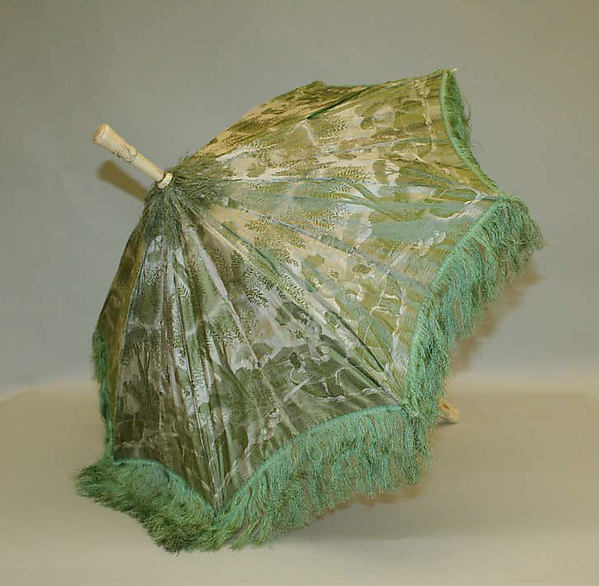 |
| Brocade parasol with silk fringe, c. 1860, from The Met. |
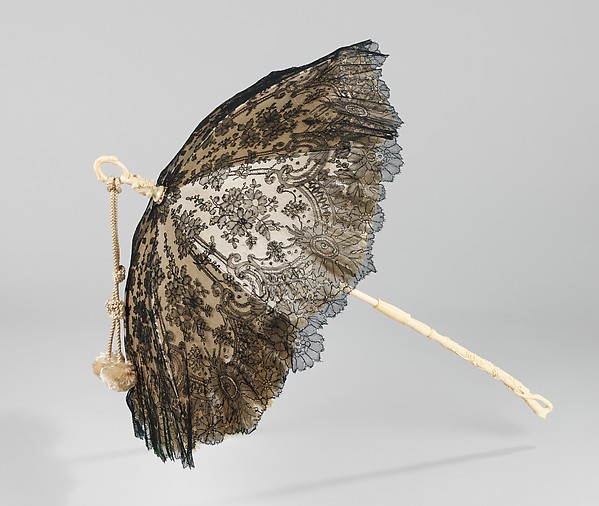 |
| Black Chantilly lace over a white silk canopy is a popular design from the 1850s to 1870s. From The Met, which also has one in black. |
The only current source for appropriately-sized reproduction parasols is Maggie Reese, who recently started producing 25" walking parasols; she is also one of the few people commercially re-covering antique parasols at this time. For re-covering one's own antique frame, the late Marta Vincent wrote some succinct instructions at the Sewing Academy.
No comments:
Post a Comment